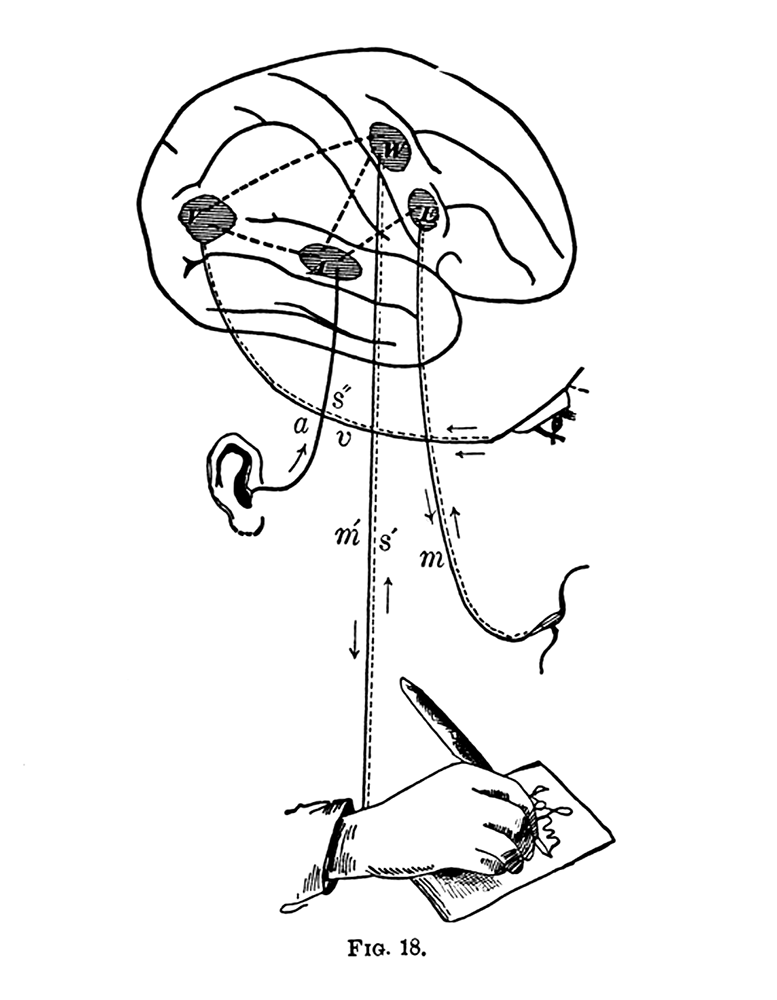Here’s a diagram from William James’ 1890 book, The Principles of Psychology:

The drawing makes concrete what has been implied all semester: reading and writing are intimately connected through the *specific* shapes of the letters. Your brain decodes the shapes and corresponds the marks across a learned dictionary look-up table to produce words which produce sentences which convey and record ideas.
It is or will have been an abbreviated semester. We moved from alien writing to metal letters, photography to cellphone typography. We saw lots of other people make typography. We tried our own hands at it. We read around some previous attempts at rationalizing the alphabet. We even visited an online show of “wrecked alphabets.” Now it’s time to take stock.
You will have your complete Ground Writing / Chinese text entry interface assignments ready for review. We will proceed, student by student, Zoom grid square to Zoom grid square taking turns running the online show. We will have a surprise guest critic to give some fresh eyes on your work.
When it is your time to present, you take control. And for the following 15 minutes you may lead us through the work that you have made in any way that you find best helps us to understand what you have done and why you have done it. Then you will listen.
The group of us—the other students, a critic, me—will then let you know what we see in the work. This is what matters, remember. You may have great intentions, brilliant concepts, and even an articulated aesthetic position, but all of this must eventually be legible in the constellation of glyphs that you have arranged on so many pages. Recall from the semester that typography is most definitely a finite circuit: Writing *is* reading *is* writing *is* . . .
OK. Let’s get started. Who’s first?